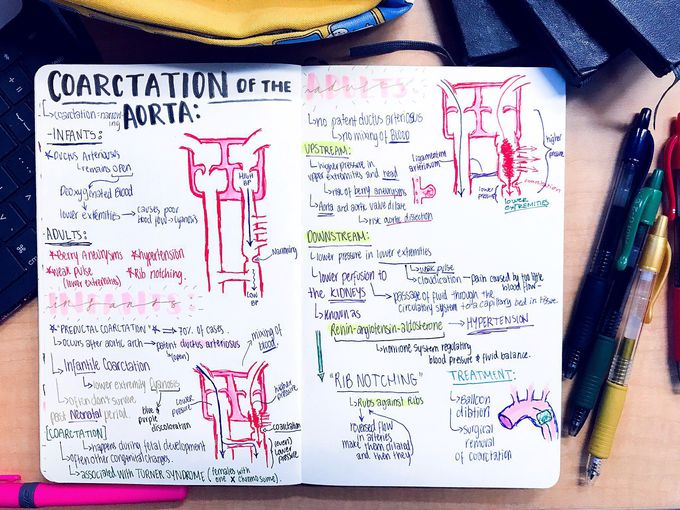


Aortic Coarctation
👋...hey guys...here’s some notes on ➡️Aortic Coarctation⬅️: So this can occur in both infants and adults, but 70% of the cases are preductal coarctations, meaning that there is a patent ductus arteriosus where blood can flow from the pulmonary vein into the aorta. Because there in coarctation of the aorta, the blood vessel becomes narrow and the blood pressure becomes lower allowing deoxygenated blood from the right atrium to flow into the aorta and go to the lower extremities. Because deoxygenated blood is flowing to the legs this can cause cyanosis, presenting as a blue or purple discoloration. In infants the cause of coarctation is usually congenital and can sometimes be associated with Turner’s syndrome. However, in adults the main cause for aortic coarctation is unknown (trauma, however can sometimes cause it). In adults there is no patent ductus arteriosus so there is no crossing over of the blood, but the lower extremities still get less blood because the narrowing of the aorta after the left subclavian artery means that the majority of the blood is going into the left and right common carotids to the head (this can cause berry aneurysms). In the lower extremities there is a weak pulse and claudication. There is also lower perfusion to the kidneys and the kidneys react by activating the renin-angiotensin-aldosterone system which retains water, increasing blood pressure and leading to hypertension. The reversed flow in the intercostal arteries make them dilated and the rub against the ribs causing rib-notching. Treatment for aortic coarctation can include balloon dilation which involves opening up the narrowed part of the aorta or surgical removal of the coarctation!

